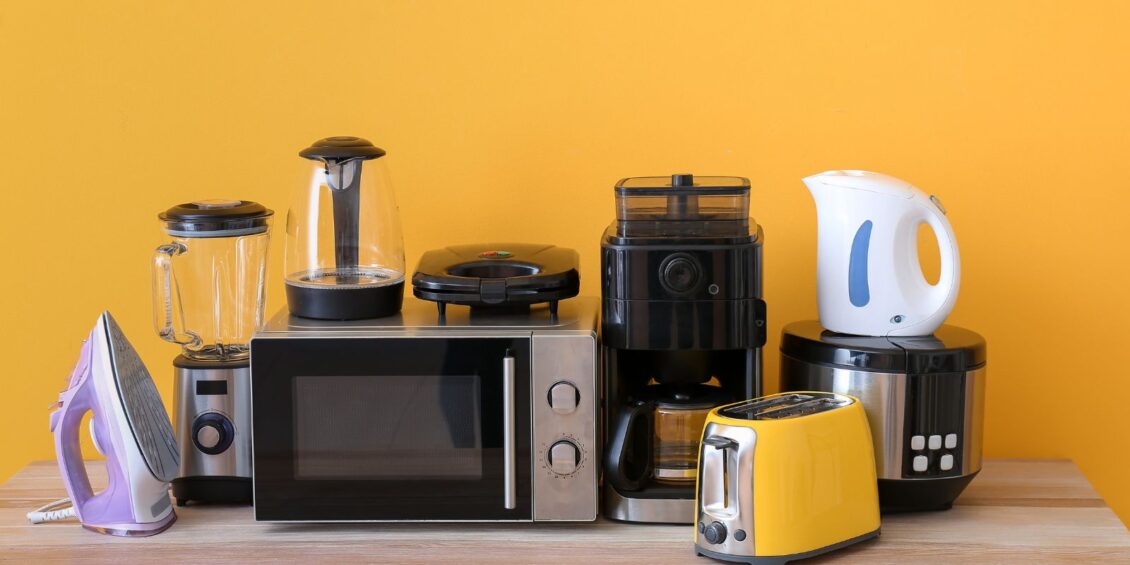Today, household appliances have become a necessary part of our life. As an integral part of the product, their shells (shells) have to not only be strong and durable but also attractive and environmentally friendly. Then, what is the composition of the production cost of household appliance shells? What are the factors that affect the final price? Is it material selection, injection molding processes or the production management costs?
The Impact of Material Selection on Costs
There are a wide variety of materials which household appliance shells are made from, the most common being ABS plastic (Acrylonitrile Butadiene Styrene), PC (Polycarbonate), and PVC (Polyvinyl Chloride). The final production cost is highly dependent on the choice of each material.
ABC Plastic: ABS plastic also has good heat resistance, which is why this thermoplastic is frequently used in appliance shells. The absorption of the excess capacity will take $2,000 to $2,500 per ton as the market price of ABS plastic, which is specific to the raw material supply and market fluctuations. ABS material costs comprise about 40% to 50% of the total production cost for the production of a medium-sized appliance shell.
Polycarbonate (PC): Polycarbonate is a high strength, high impact resistant plastic used in appliances that need to be stronger such as microwave ovens and air conditioner shells. The price of PC is higher than ABS with market price of PC is around $3,000 to $3,500 per ton. For that reason, the unit cost will be greatly increased if polycarbonate material is used to produce shells.
Polyvinyl Chloride (PVC): PVC is highly resistant to corrosion and would be suitable for appliance shells in certain specific applications such as in low cost products. PVC price is relatively low, with a market price of about $1,200 to $1,500 per ton. Therefore, the cost of manufacturing PVC based appliance shells is relatively low, but impact resistance and heat resistance of PVC is not as good as ABS or PC.
The Impact of Injection Molding Processes on Costs
The most common processing method for producing appliance shells is injection molding. The above components are the main cost elements in injection molding.
Injection Mold Cost: Injection molds are usually costly to design and manufacture with complex shapes. The cost of a standard appliance shell mold is usually between $10,000 and $20,000, or more. However, the one-time investment into mold usually has a great impact on large scale production unit costs.
Injection Molding Machine Operating Costs: A list of the operating costs of injection molding machines is electricity, maintenance, and labor wages. The cost of producing the product directly depends on the operating time, material consumption and the production efficiency. The injection molding machine takes about 20 to 30 dollars per hour to operate. The production of an appliance shell may take 5 to 10 minutes for the molding cycle. In the case of high-volume production, however, the unit cost of injection molding is in the range of $1 to $3 per shell.
Labor Cost: The wages of operators and technicians who are involved in the production process also constitute the injection molding cost. In fact, in labor-intensive regions, labor work can take up 20–30% of your total cost. For instance, the average monthly wage of a labor is about $1,500 to $2,000; in developing countries, the cost may be lower but labor costs are higher in developed countries like the U.S. and Europe.
Production Management Costs
Production management costs also affect the total production cost of appliance shells besides direct material and processing costs. Fixed and variable costs include factory rent, equipment depreciation, energy consumption and so on.
Factory and Equipment Depreciation: Investments in factories and equipment for shell production are long-term investments, but depreciation expenses for such fixed assets have direct impact on product costs. For example, assume that the monthly depreciation cost for equipment would be about $5,000 to $10,000, and the depreciation cost of product per product would be about 5% to 10% of the total production cost.
Energy consumption: Injection molding of appliance shells requires large amounts of electricity especially with the use of large molding machines that have large energy consumption. Depending on the region and the supply of electricity, the cost of electricity is about $0.08 to $0.15 per kilowatt-hour. Energy costs are a small but noticeable cost for each shell because each molding cycle typically takes 1 to 2 kWh of electricity.
Quality Control and Inspection: Appliance shells are subject to multiple inspections during production to satisfy the quality criteria. Labor costs, equipment expenses, and the expenses of the use of inspection tools were included as costs for quality control and inspection. Quality control costs around 5% of the total production cost, and in the case of large-scale production, they are more significant.
Comprehensive Cost Estimation
Our production plan includes 100,000 appliance shells made from ABS plastic with a $15,000 mold expense at startup. Our projected production cost for each appliance shell depends on these points.
Material Cost: The price of ABS plastic stands at $2,200 per ton. A single ABS plastic shell needs 0.2 kg of ABS plastic, which costs $0.44 per item. The material expenses for making 100,000 shells amount to $44,000.
Mold Cost: Using the mold for 100,000 shells costs $15,000 which amounts to $0.15 per shell.
Injection Molding Cost: The injection molding machine charges $2 to produce each shell part. The total injection molding expense for 100,000 shells amounts to $200,000.
Production Management Cost: The production management expenses at 10% of production costs amount to $25,000 for 100,000 shells resulting in $0.25 per shell.
Our total production expenses for one appliance shell amount to this figure.
- Material Cost: $0.44
- Mold Cost: $0.15
- Injection Molding Cost: $2.00
- Production Management Cost: $0.25
Total Cost: $2.84
The final retail price needs to include transportation, sales, and other business costs in order to be determined. To make the factory profitable, the cost of each appliance shell needs to be between $5 and $10.
The Role of Sustainable Practices in Cost and Production
Manufacturers now base their production of household appliance shells on sustainability standards. The manufacturing industry uses both new green materials and more efficient ways to work which prevent more environmental damage. Putting sustainable methods into action creates different impacts on production expenses.
Using recycled plastics plays a major role in this system. Using recycled ABS and polycarbonate materials saves money and reduces waste amounts. Recycling needs advanced tools and testing methods plus further processing which sometimes matches the expense savings. Purifying recycled ABS plastic costs $300 more per ton after the initial $1,800 per ton price.
The production methods that use less energy represent a significant cost factor. Organizations that buy energy-saving injection molding machines will pay more initially but earn money through lower running costs in the future. Enhanced machines use less electricity, which lowers operational expenses. These machines decrease their energy consumption by 20% to 30%, which lowers their electricity costs for every production run.
Getting ISO 14001 environmental management certification requires spending money on compliance audits plus training programs to source eco-friendly materials. These qualifications build brand trust and draw customer support from those who care about the environment.
Biodegradable plastic alternative PLA costs 30% to 50% more than regular plastic due to its higher production expenses. People do not use these eco-friendly materials as often because they lack sufficient durability.
Companies that implement sustainable production habits find long-term value in license requirements, plus lower waste management payments and a stronger position in market competition against eco-friendly brands.
The Influence of Supply Chain and Market Trends on Pricing
The cost of producing household appliance shells is not fixed; it varies depending on the global supply chain and market trend. Final production costs depend on many factors including raw material availability, geopolitical issues, and economic shifts among others.
The price volatility of raw materials is a major concern. For example, the price of ABS plastic fluctuates due to crude oil prices, transportation costs, and demand-supply imbalances. The final product cost can be increased by 10% to 20% if oil prices rise, and this is where the ABS production costs come into play. Supply chain disruptions, like trade restrictions or delays in shipping, also can be seen impacting on availability of the materials leading to higher expenses.
The other important factor is labor costs. Appliance shells manufactured in China, Vietnam, or India can be produced at lower price than in high wage regions like the U.S. or Europe. Although automation in production helps similarly mitigate labor cost differences, the investment needed up front for robots and AI manufacturing can be a substantial expense.
Pricing doesn’t exclude tariffs or trade regulations. In the case where a country discriminates in the import duty of the raw materials or finished products, then the manufacturers will have to rethink their pricing strategy. For instance, if a 10 percent tariff is put on imported ABS plastic a ton increases in cost of $200, or several cents per unit.
It also depends on market demand. As demand for premium, high durability appliances rises, manufacturers may begin producing with more expensive materials such as polycarbonate and increase production costs. On the contrary, in times of economic downturns, companies may choose lower cost materials such as PVC to keep costs low.
Manufacturers can understand these external factors and develop flexible pricing strategies to be cost efficient yet competitive in the market.









Leave a Reply
View Comments